- Xiem Can Pagoda - a tourist destination with strong Khmer colors
- Keeping the Khmer culture alive in the midst of modern life
- Ca Mau honors Khmer culture at Ok Om Bok Festival
Origin and spread in Ca Mau
The Pentatonic Orchestra originated from ancient Indian Brahman court music , which was adopted and localized by the Khmer people over thousands of years. By the end of the 18th century, this music was brought to Rach Giong Pagoda (Ho Thi Ky commune) by Venerable Danh On, from there it spread to many other pagodas such as Cao Dan Pagoda (Tan Loc commune), Monivongsa (An Xuyen ward), Tam Hiep (Tran Van Thoi commune) and other localities in the province, forming groups of artisans to practice and perform for many generations.
 Performance of the Pentatonic Orchestra at the cultural heritage exhibition event.
Performance of the Pentatonic Orchestra at the cultural heritage exhibition event.
The name “Pentacle” comes from the five materials used to make musical instruments: bronze, iron, wood, leather and wind, symbolizing the five elements in Eastern philosophy. A complete Pentatonic orchestra usually consists of nine musical instruments: Rone-ek, Rone-thung, Rone-dek, Koong-vong-thum, Koong-vong-toch, Skothum, Skothum, Sko-som-pho, Sro-lay Pinn Peat and Chhung. In which, Rone-ek leads the melody, Skothum and Skothum keep the rhythm, and Sro-lay Pinn Peat is the “soul” that creates the gentle, resonant sound. Pentatonic instruments and sounds become a spiritual language, connecting people with gods and ancestors.
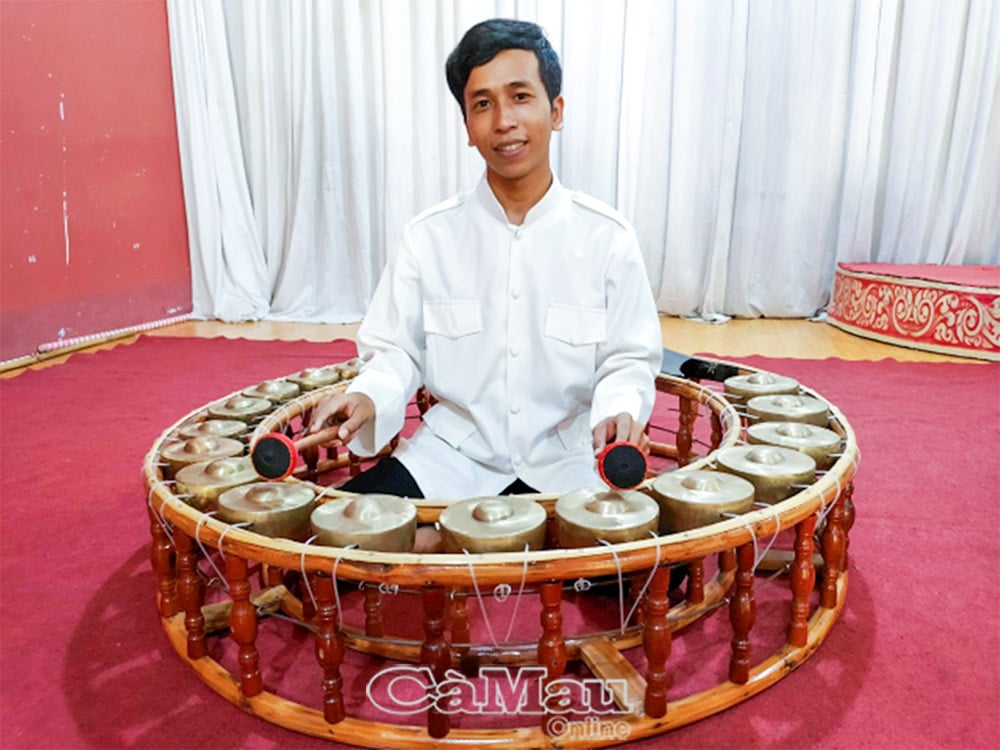 Artist practicing the Koong-vong-toch instrument.
Artist practicing the Koong-vong-toch instrument.
According to research documents, the Khmer Pentatonic Orchestra is one of the most complex and ancient musical instrument systems in Southeast Asia, comparable to the Thai royal orchestra or the Indonesian Gamelan orchestra.
 Artist practicing the Rone-tek instrument.
Artist practicing the Rone-tek instrument.
Role in cultural life
Pentatonic music is present in all important Khmer rituals: Buddha's Birthday , Kathina Offering, Ok Om Bok, Chol Chnam Thmay, funerals... The sound of drums and bells signals the great ceremony, and the three beats of the mourning drum and the clear sound of Ro-neat-ek are farewells to the deceased. In addition to rituals, Pleng Pinn Peat also appears in festivals, competitions, Du Ke and Ro Bam stages and community cultural activities, helping the young generation approach and learn about traditions.
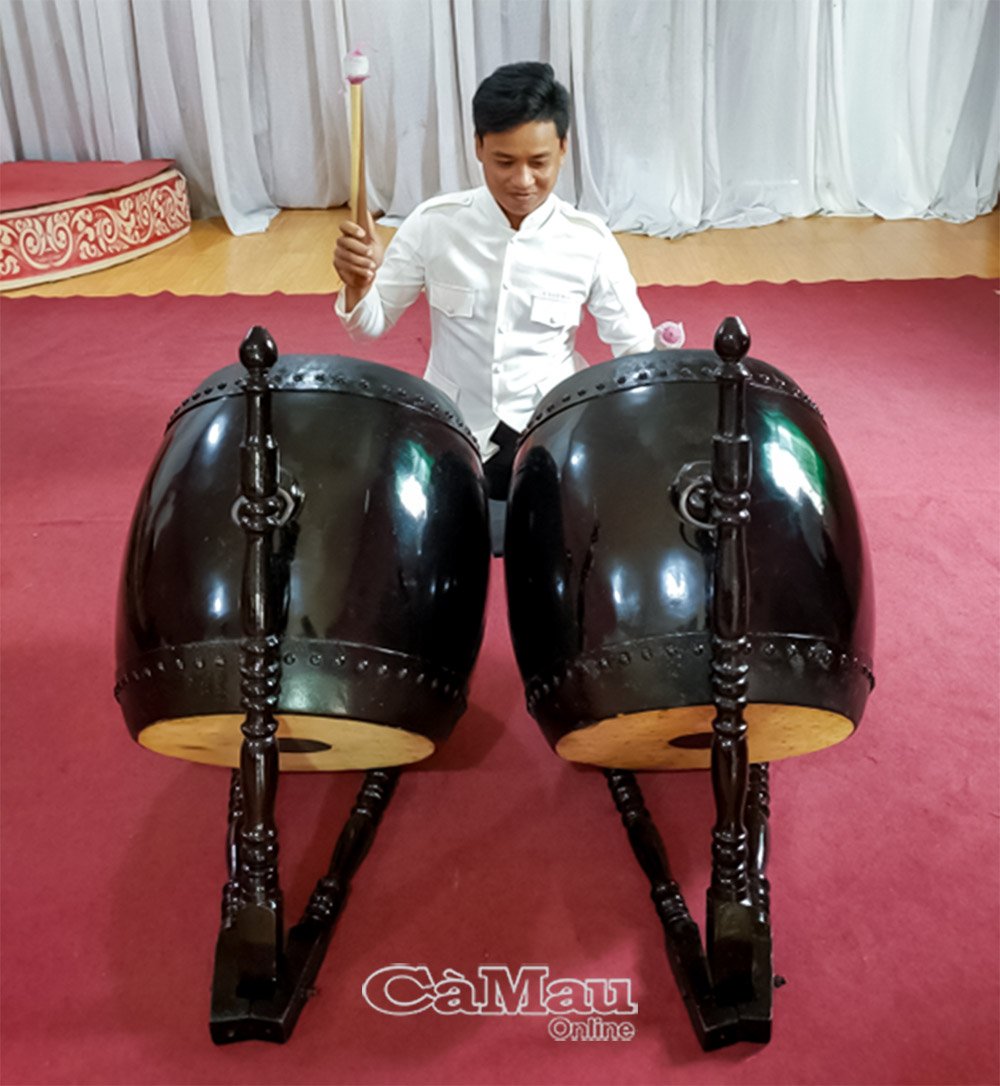 Skô-thum musical instrument practitioner.
Skô-thum musical instrument practitioner.
Preserve and promote values
Pentatonic music reflects the cultural exchange of Hinduism, Buddhism and Khmer indigenous beliefs. Each instrument is a delicate handcrafted work, carved with traditional patterns, when played together, creating a lively symphony reminiscent of nature and community life. Plêng Pinn Peat is also considered “Buddhist music”, with the power to wash away sorrow and guide people to goodness.
 Organize the exhibition of the Pentatonic Orchestra for students and youth union members.
Organize the exhibition of the Pentatonic Orchestra for students and youth union members.
Currently, pagodas, Salatel and Khmer communities still maintain the use of the Five-tone orchestra. Ca Mau province has also implemented many conservation activities: exhibitions, introductions, performances, training and teaching in schools and communities. At the same time, the application of digital technology to archive and disseminate ancient music, build databases and bring Five-tone music into community tourism is being promoted.
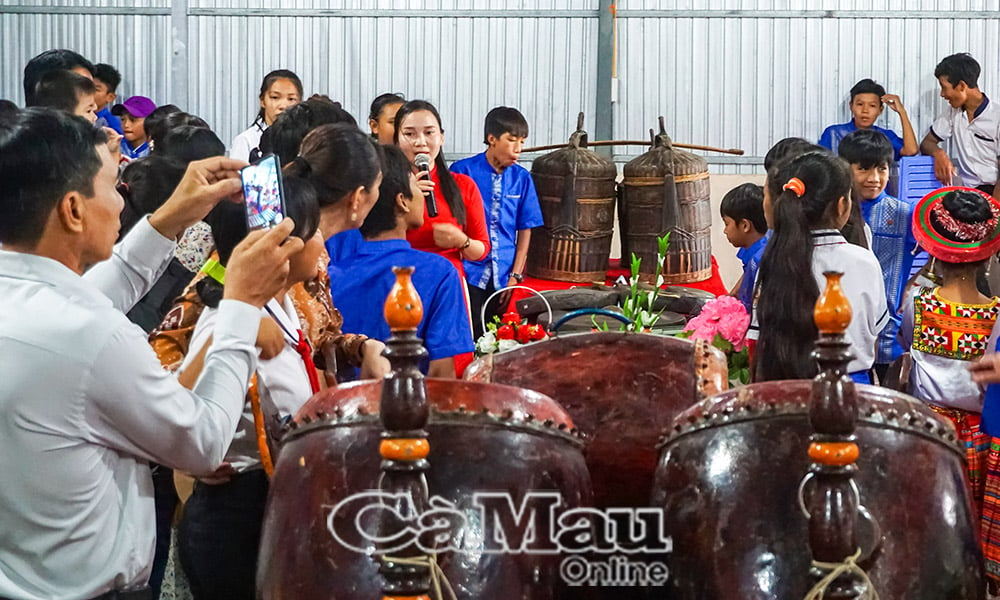 The tour guide introduces the Pentatonic Orchestra.
The tour guide introduces the Pentatonic Orchestra.
Five-tone music is not only a precious intangible heritage, but also a testament to the enduring vitality of Khmer culture. Each drum, trumpet, and flute sound in the temple yard is a reminder of one's roots, filial piety, and belief in goodness. Keeping Plêng Pinn Peat resonating in today's life is keeping the Khmer soul bright and the Ca Mau cultural identity richer and more humane.
Dang Minh
Source: https://baocamau.vn/nhac-ngu-am-linh-hon-van-hoa-nguoi-khmer-ca-mau-a123938.html










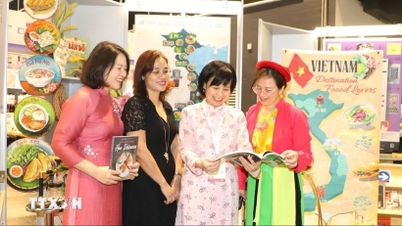




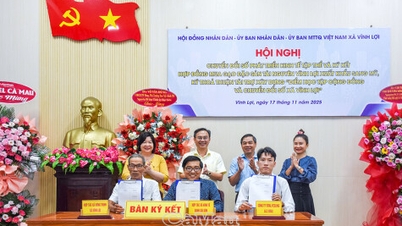









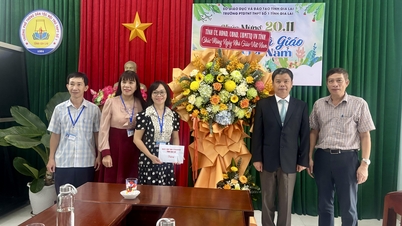













![[Photo] General Secretary To Lam and National Assembly Chairman Tran Thanh Man attend the 80th Anniversary of the Traditional Day of the Vietnamese Inspection Sector](https://vphoto.vietnam.vn/thumb/1200x675/vietnam/resource/IMAGE/2025/11/17/1763356362984_a2-bnd-7940-3561-jpg.webp)


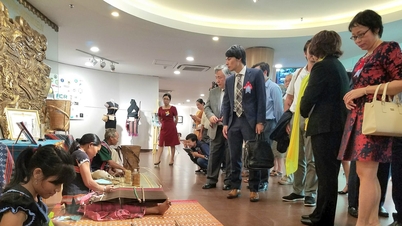






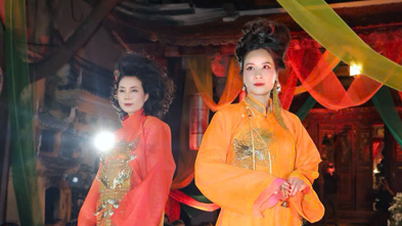














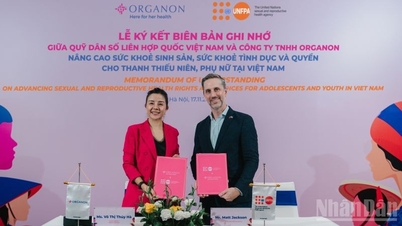











































Comment (0)